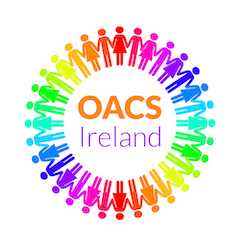Neurodevelopmental outcomes in children and adults with Fetal Valproate Spectrum Disorder: A contribution from the ConcePTION project.
Introduction:
OACS Ireland are delighted to welcome a key paper written by M. Bluett-Duncan, co-written by Rebecca Bromley and other health care professionals, along with input from patient groups in Ireland, UK and New Zealand. It is the largest study of the neurodevelopmental phenotype of FVSD. The new research has been published in the medical journal of Neurotoxicology and Teratology.
OACS Ireland would also like to thank all families harmed by Epilim (Sodium Valproate) for taking the time to fill out their questionnaires.

Keywords: Cognition; Epilepsy; Fetal Valproate Spectrum Disorder; Neurodevelopment; Sodium Valproate; Teratology.
Highlights
1. This is the largest study of the neurodevelopmental phenotype of FVSD.
2.Neurodevelopmental difficulties are observed up to adulthood for the first time.
3.Cognitive, mood and sensory difficulties are highly prevalent in those with FVSD.
4.Neurodevelopmental impairment occurs commonly in the absence of physical impairment.
5.A multidisciplinary approach to clinical management is needed for people with FVSD
Abstract
Aim
To describe the neurodevelopmental phenotype of older children and adults with a diagnosis of Fetal Valproate Spectrum Disorder (FVSD).
Methods
In this cross-sectional study, 90 caregivers were recruited and completed a series of questionnaires regarding the neurodevelopmental outcomes of 146 individuals aged 7–37 years (M = 18.1), including individuals with a formal diagnosis of FVSD (n = 99), individuals exposed to Valproate but without an FVSD diagnosis (n = 24), and individuals not exposed to Valproate (N = 23). The mean dose of valproate exposure for individuals with an FVSD diagnosis was 1470 mg/day.
Results
Individuals with a diagnosis of FVSD showed significantly higher levels of moderate (43.4%) and severe (14.4%) cognitive impairment than other groups (p = 0.003), high levels of required formal educational support (77.6%), and poorer academic competence than individuals not exposed to Valproate (p = 0.001). Overall psychosocial problems (p = 0.02), internalising problems (p = 0.05) and attention problems (p = 0.001), but not externalising problems, were elevated in individuals with a diagnosis of FVSD. Rates of neurodevelopmental disorders, particularly autistic spectrum disorders (62.9%) and sensory problems (80.6%) are particularly central to the FVSD phenotype. There was no evidence of a statistical dose-dependent effect, possibly due to the high mean dose of exposure having a uniformly negative impact across the sample. Individuals with FVSD had required a significant number of health and child development services.
Interpretation
Children and young adults with a diagnosis of FVSD are at an increased risk of a range of altered neurodevelopmental outcomes, highlighting the need for a multidisciplinary approach to clinical management across the lifespan. You can download the paper at this link: https://doi.org/10.1016/j.ntt.2023.107292
